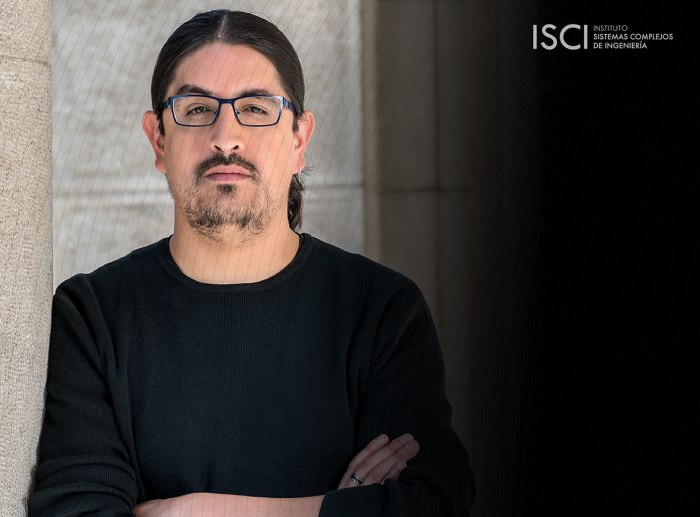Science in Chile helping to combat the virus: d esign of shifts, mass testing, and telemedicine

With nine projects, the team is busy at Chile’s Complex Engineering Systems Institute (ISCI), a center for excellence in innovation. The center’s Director, Leonardo Basso, says “at the start of the pandemic we decided to focus our capacity, knowledge, and resources on the crisis and try to collaborate directly with front-line healthcare workers”.
The health emergency that has caused the Coronavirus type 2 pandemic of the severe acute respiratory syndrome or SARS-CoV-2 has made all the world’s scientists work to defeat this disease: Biologists, physicists, chemists, epidemiologists, doctors, data scientists, mathematicians, and computer engineers. Multidisciplinary teams that have come together to contribute to improving the chances of beating a disease with science and knowledge.
In Chile, scientists from the universities of Universidad de Chile, Universidad de Concepción, Universidad Católica and the Universidad de Santiago, and members of the Complex Engineering Systems Institute (ISCI) – led by Leonardo Basso, Ph.D., in Economics and Transport Policies of the University of British Columbia – have developed a series of initiatives that seek to help doctors perform tests more efficiently, improve the use of hospital resources, generate optimal shifts for the health of medical teams via algorithms, allowing them to read the data from mechanical ventilators remotely.
ISCI is a Center for Excellence that creates innovation appliable in society through research in Engineering.
According to Leonardo Basso, the center’s Director, “at the start of the pandemic we decided to focus our capacity, knowledge, and resources on the crisis and try to collaborate directly with front-line healthcare workers, the hospital staff, and for that reason the vast majority of our initiatives are focused on this field. We want to bring innovation to the front line”.
“The first thing we did is a microsimulation model of the advance of the pandemic in time that is particularly special”, Basso continues, “it is the only one that offers geographic granularity for the Metropolitan Region that allows us to identify how the physical confinement models behave”.
The model simulates the behavior of individuals and their social interactions through the home, work, school, and through connections in the community, using for this purpose detailed and objective information on the movement of people in the city based on the following data:
1.- School Admission System: indicates the flow patterns of children from home to school.
2.- Validation of BIP travel smartcards on the Transantiago system: indicates the travel patterns of people in public transport during working hours.
3.- Origin-Destination Transport Survey: indicates the patterns of travel by private transport.
Basso says that “in this model we generate three scenarios, with school closings only, with total quarantine, and intermittent quarantines. According to the study, one of the answers is that Scenario 2 (total quarantine for the region) would rapidly reduce the number of active cases over a short time. During the quarantine, the reproduction number R0 drops to 0.6, however, this does not mean the end of the pandemic if the removal of the total quarantine (not graphed) is not followed by other measures such as mass testing, monitoring of new cases of infection, confinement and/or intermittent quarantine strategies according to a defined threshold”.
Mass group testing
Since the beginning of the crisis, doctors from the Faculty of Medicine of the Universidad de Chile and Engineers from ISCI have proposed the use of group testing techniques in the processing of PCR samples. That is, use a single PCR test for a group of people (5, 10 or more). The main advantage of this technique is that it reduces the number of tests required and the use of reagents, which are scarce.
Leonardo Basso says that using this technique can multiply the testing capacity four-fold.
“When a group tests positive, we must test all the members of that group, but if 9 out of 10 groups come out negative, you use 19 tests and not 100, which means a saving in PCR tests. The pilot scheme we propose is to use it in care homes in conjunction with the Chilean Association for Safety, and thus we can detect outbreaks of infection and act quickly to combat them.”.
Innovation at Hospital de Ñuble
This ongoing project has several subcomponents that Basso and his team are developing rapidly. For example, among others, the design of work shifts to maintain critical care capacity, minimizing the probability of infection among staff. “The visualization platform is being worked on in conjunction with the company Intelligenxia. This permits a dynamic optimization, relocating staff between shifts, schedules and centers as infections appear. Traceability to identify personnel at risk of infection” says Basso.
“What we are doing at the hospital in Ñuble is working on a shift schedule that minimizes the possibility of infection and maximizes the capacity of clinical teams over time, which are made up of intensive care specialists, TENS, physical therapists, and we will monitor all staff members, allowing us to trace contacts with people who are showing symptoms”. In addition to this, another project, which is very advanced, will make it possible to read data from mechanical ventilators remotely and help improve the capabilities of the Hospital de Ñuble”, concludes Leonardo Basso.
Hear the full interview in the following video [In Spanish]
